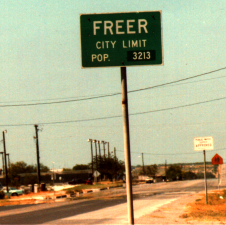
Palo Alto College
History 1302
November 14, 2006
Freer, Texas
 Palo Alto College |
|
Christie Guerra and Susi Aragon History 1302 |
Robert Hines November 14, 2006 |
Freer, Texas
|
|
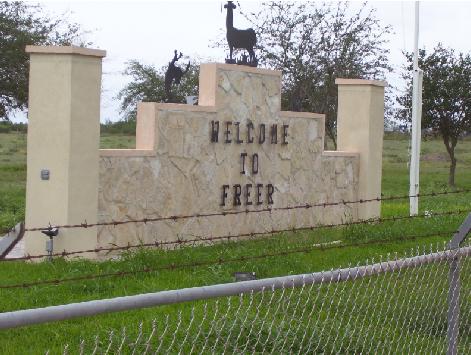
The town was originally called the Las Hermanitas (the Sisters) since town was between two hills. It is the second largest town in Duval County and was later known as Government Wells. In 1876, the United States Calvary had dug a water well north of Freer and it is for this reason the town received the name Government Wells. Norman G. Collins moved to Duval County in 1867, he bought 35,000 acres of the future site of Freer.
A German immigrant by the name of William Hubberd was one of the settlers in Government Wells and he became the head rancher on the Collins's ranch. Mr. Hubbed bought his own land in 1876. Other settlers were the White brothers, Paul and Joe, who settled in Rosita Creek in the 1900s, close to Freer, to dig water well for the community of ranchers.
Within a few years others followed the White brothers, this included Harry and Arthur Lentil in 1905 and August H. Kramer in 1908. In July 1905 rancher Dos Sago sold his land, which included the future site of Freer, to Encarnacion Rodriguez. He in turn sold it to Roxana Gunter in 1907 and she sold twenty section of land, to include the future site of Freer, to a Houston real-estate entrepreneur named C. W. Hahl. Mr. Hahl publicized his land for sale in nationwide through newspaper and establish an office in San Diego, Texas with J. M. Momeny. Mr. Hahl sold his land for eighty-acre section for a dollar down per acre and fifteen dollars per acre with fourteen years to pay. To attract buyers, Hahl would hang apples on the mesquite trees. John W. Riley family, who was from Binger, Oklahoma, was the first to come to Hahl's Rosita Valley Rancho (Freer) in April 1916. They set up a tent settled three-fourths of a mile west of Freer.
Mr. Riley brought his wife and eight children to work the land. In clearing the land by hand Mr. Riley and his oldest son where constantly disturbed with killing rattlesnakes while working. In some month the Riley family, killed about sixty rattlesnakes and daily about four to five. Mrs. Riley would cut the snakes into pieces and use the fat as a home remedy for illness her family encountered. The snake oil was helped aching joints and other such afflictions. Hollis Riley was the first to born in Freer. Their closes neighbors were the White brothers and the Kramer Family. The Riley family consumed many rabbits that were killed by the Riley's girls. The family endured many hardships: pack rats, rattlesnakes, droughts, sweltering heat, and doing without doctors. In the first winter their neighbor from Binger came to visit and they fell in love with the land.
In 1915 nationwide advertisements were around the country promoting land for 1,000 dollars for sixty acres in the town of Rosita Valley by Mr. Hahl. In 1916 Daniel J. Freer's family was thinking about buying 160 acres of land adjoining to the Riley family. The decision was not final until his son Charles Freer examined the land thoroughly. The Freer family moved in 1917 to Rosita Valley and there was no stores or post office in the town.
In 1919, J. T. Johnson and his brother-in-law George also bought property adjoining to each other. Both Johnson and George built a two-room house and later brought their families in 1925. There were six families in Rosita Valley and everyone had to go to San Diego about 25 miles east to shop. They also had to get their mail at Box 112 in San Diego. J. T. Johnson and Charles Freer decide to send an application to the Post Office Department in Washington, D.C. in 1925 to ordain a post office in the community. They submitted three names to the Washington post office: Riley, Wendt, and Freer, since the first two names were already being used in Texas, Freer was chosen. The selection was perfect, because Mr. Freer actually purchased and the developed the original town site. Charles Freers' wife, Minnie Freer, daughter of Mr. Riley, was the first postmaster. Their home was the first post office. Mr. Freer established the first utility plant and owned one of first gas station in Freer. He also donated and help set up the first Chamber of Commerce in 1934. Then sadly on December 7, 1941 the day of Pearl Harbor Mr. Freer passed away in San Antonio at the Nixon hospital. "J.D White, a long-time rancher in Freer, is a direct descendant of Mr. Freer. Mr. White's mother was one of D. J Freer's daughters."
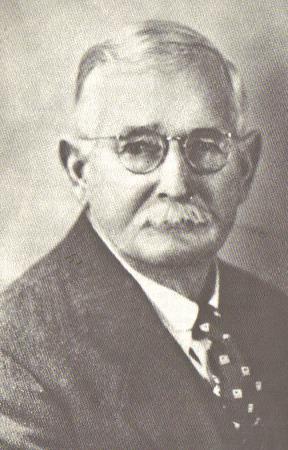
The Scoundrels of Freer:
As the community started to grow it attracted the variety of unlawful people, which included prostitutes, gamblers, and the infamous imposter of a doctor. During the earlier days of the oil boom there was no jailhouse in Freer. The only way the peace officers could manage with crimes would be to tie drunks and law offenders to the nearest post or horse hitching posts. By 1930 a coop was built as a jailhouse but often was full in capacity, so they used the telephone post located in front of the drug store. By 1932 Freer's first doctor Dr. Charles Palmer Tate left Dilley, Texas in search of more money in Freer, but by 1934 he retired and fled back to Lubbock, Texas. By 1936 a successful doctor was loved by the community and became the first president of the chamber of commerce. But in return it was discovered that "Dr. Floyd" really was a Pharmacist. The real Dr. Floyd was dead and the fake Dr. Floyd had stolen his credentials to get rich. The community had no clue because he seemed so real, but this was because he was a pharmacist. During this time he had been discovered and arrested, but he had skipped bail and disappeared.
Major events that attract tourist is the Rattlesnake Round Up which was previously known as "Oil -O-Rama" in 1965. Here this event consisted of oil field equipment displays, a dance, and a Miss Oil-O-Rama pageant. Then by 1985 it changed to The Rattlesnake Round Up, here rattlesnake are slaughtered publicly and then the women or girlfriends would cook fried rattlesnake meat.
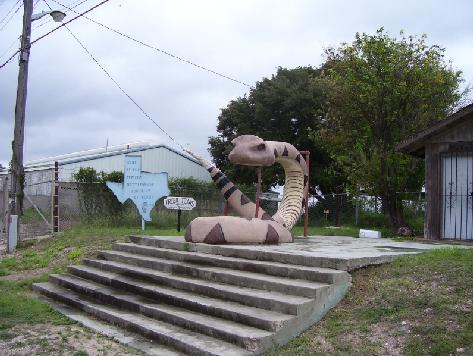 As the people of the United States began to realize the importance of petroleum, they began to see the profit of crude oil blooming. As early as the 1860's small portions of petroleum were being produced from shallow wells in small towns near Freer. Such as Piedras Pintas in 1907, small town near Freer, "was not only the first oil field in Duval County, but was the first in Texas and missed being the first in the United States by a year or so" (Alice Echo Energy Newspaper 1983). The small amount of oil was being used for furnishing shipping wagons to the freighters near by. As oil was beginning to become the new profit making in America, Freer was beginning its own business for the testing central journey for oil. During the development of Freer, The main contribution of Freer's economic up rise was indeed the dips petroleum industries placed on land in search of oil. By 1923 major oil companies started leasing and selling land from 10 cents up to 95 cents an acre. The attraction that brought the attention to Freer and huge oil companies were that there was proven oil in a field sixty miles southwest of Freer. The other attraction was the shoreline that ran from Reynosa, Mexico, to east of Freer, which could be used as transportation for crude oil.
Then by 1928 the first major event happened in on W.P Norton property, what is now Freer's town site, which would bring more settlers to this town. Three wildcatter's were drilling for oil on W.P. Norton property in Freer, which had struck "one of the largest oil reserves" (www.tsha.utexas.edu). This discovery was the rise of the successful new Freer; it had brought in settlers from mid-western states such as Arizona, Oklahoma, New Mexico, and Kansas. But soon this successful oil finding field business for oil would soon fail, because of the great depression and the new finding of oil in Eastern part of Texas.
On October 1928 Freer's biggest drilling boom came into play with its first well, called the Saxet Hahl Number 1. Thereafter the second boom, which would be bigger than the first, was the Helen-Suttle number 1 well in the spring of 1932. This was the real economic prevailed of the birth of Freer. "In 1933, Freer was the second largest field in the United States." (http://home.cc.umanitoba.ca). This oil well was bringing in thousands of dollars to the Freer community, bringing in hundreds of jobs with over 1000 wells in production. This was another reason that attracted settlers to Freer. Freer was soon nicknamed the "Buckle of the oil Belt".
As the people of the United States began to realize the importance of petroleum, they began to see the profit of crude oil blooming. As early as the 1860's small portions of petroleum were being produced from shallow wells in small towns near Freer. Such as Piedras Pintas in 1907, small town near Freer, "was not only the first oil field in Duval County, but was the first in Texas and missed being the first in the United States by a year or so" (Alice Echo Energy Newspaper 1983). The small amount of oil was being used for furnishing shipping wagons to the freighters near by. As oil was beginning to become the new profit making in America, Freer was beginning its own business for the testing central journey for oil. During the development of Freer, The main contribution of Freer's economic up rise was indeed the dips petroleum industries placed on land in search of oil. By 1923 major oil companies started leasing and selling land from 10 cents up to 95 cents an acre. The attraction that brought the attention to Freer and huge oil companies were that there was proven oil in a field sixty miles southwest of Freer. The other attraction was the shoreline that ran from Reynosa, Mexico, to east of Freer, which could be used as transportation for crude oil.
Then by 1928 the first major event happened in on W.P Norton property, what is now Freer's town site, which would bring more settlers to this town. Three wildcatter's were drilling for oil on W.P. Norton property in Freer, which had struck "one of the largest oil reserves" (www.tsha.utexas.edu). This discovery was the rise of the successful new Freer; it had brought in settlers from mid-western states such as Arizona, Oklahoma, New Mexico, and Kansas. But soon this successful oil finding field business for oil would soon fail, because of the great depression and the new finding of oil in Eastern part of Texas.
On October 1928 Freer's biggest drilling boom came into play with its first well, called the Saxet Hahl Number 1. Thereafter the second boom, which would be bigger than the first, was the Helen-Suttle number 1 well in the spring of 1932. This was the real economic prevailed of the birth of Freer. "In 1933, Freer was the second largest field in the United States." (http://home.cc.umanitoba.ca). This oil well was bringing in thousands of dollars to the Freer community, bringing in hundreds of jobs with over 1000 wells in production. This was another reason that attracted settlers to Freer. Freer was soon nicknamed the "Buckle of the oil Belt". 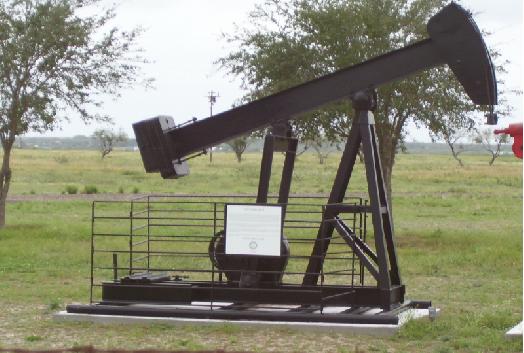
The establishment of Freer was not only working oil industries that made up Freer, but the families that started making Freer a real community for the children and the new life in Freer. In 1917 the first one room schoolhouse was built and put in effect by Mr. J.W Riley, Mr. J.A Powers, Mr. John Short, and an old man that lived with the Guffey family. This schoolhouse was used for more than one purpose. "The school house was used on Sundays for church services, and the remainder of the week for dancing, when it was not being used for the primary purpose for which it was built." (Oil, Mud, and Guts 124). The school first started off with nine children and one teacher, then as the community started to grow in 1935 there was about 400 students with six teachers.
Ms. Darla Lee Wiederkeher, resident of Freer all her life, store owner in Freer.
Christie and Susi:
Journey to good ole' Freer Annotated Bibliography
James R. Finney Fire Chief of Freer, Texas has been a resident for twenty-eight years. His insight of the city was mainly about the beginning of the fire station in Freer. He provides some current events of the town and where to find more about the history of Freer. He told me the town of Freer use to be a tent town and only had a street named Main Street in 30's which was not paved. The beginning of the fire station was due to a fire in 1937, where the town was almost consumed by the fire. The town decided on a fire station and it was established in 1939.
Arturo G. Martinez Captain of the Fire Department of Freer, Texas and has lived in Freer for thirty-two years. He grew up in Piedras Ranch a cattle ranch which now has become a deer ranch. He is also the School Board Director of the Freer Independent School District which houses about nine hundred students from kinder to high school. He spoke of the safety of the town and the low rate of violence in Freer. Even though he admits that the town was a hidden out for most outlaws including Pancho Villa, because it was such a rural town.
Dala Lee Wiederkeher
This lady was our first hand source. She was able to give us plenty of information pertaining to the history of Freer. Her stories about her life was able to put blury information into vivid pictures. She was able to answer all of our questions in to finishing this research project.
Alice Echo Energy Newspaper 1983
This news paper article was able to give us the facts on Freers' oil boom. It gave us detail and pictures to help us understand and see what was going on in Freer at that time. This article helped us finish this report and get the main realistic facts of the birth of Freer.
Martin Donell Kohout, The Handbook of Texas Online. 1997-2002.
This web page gives general information about the history of Free. It gives details of who bought the land and how it was did not have no potable water, no sewage system, no bank and no paved road before 1938. Freer land was cheap it was sold at a dollar an eighty-acre section. It tells why the town was named Freer, because three families came together, one named Daniel John Freer, to apply for a post office in the town and the Post Office Department in Washington, D.C. selected the name Freer for the town.
Wikimedia Foundation Inc. Wikipedia, the free encyclopedia 2006.
This site gives the geography, demographics, education and external links. It gives the current population since the 2000 census and map of the town.
Freer Family Genealogy Research- FREER, Texas
This web page gives more detail about the towns name which was originally called "Rosita Valley" in the early 1900's. The family Freer gave invested much of their money and resources to the town. The web page gives a summary on the beginning of Freer and how the climate was back then. It tells of the oil boom that attracted many of people to Freer, but was short lived, because it was such a rural location. It also mention that Freer is the official town of the "Rattlesnake Round Up" this event is held every year since the 1960's.
The Humane Society of the United States. 2006
This site is against the annual celebration of the Rattlesnake Roundup. According to the web it is savage behavior and such not be tolerated and put to an end. It details how the event take place and recommends to complain to the Freer Chamber of Commerce.
The 2Fords Network
This site gives a brief history on the birth of Freer. This website included many details on the founding fathers of Freer and where the oil boom has left Freer today.
Ray Miller's Eyes of Texas, 1988
This was probably one of my best book sources. It explained the founding of Duval County. It included the founders such as Duke Duval and his brother John C Duval and the political standing with LBJ and Archie Parr. It also mentioned articles and a book that John Duval had written.
Roadside History of Texas 1994
This book basically interpreted the abundance of oil that erected from this small town. It shared on the trade that went on with oil in the early nineteen hundreds. And I read a lot about Freer being the main source of oil in Texas. This oil was being transported to others countries.
Backroads of Texas 1993
This source was the best in describing the agriculture of Freer. It also shared the agriculture and the community life style from when it first started to recent days. The before and after community style both relevated and both seemed to be a town where every one is related. The agriculture and animal setting revolve with a February month with coyotes and the month of April with rattle snakes.
Oil, Mud, and Guts 1977
This book was primarily about the begining of Freer. It had helpful stories on the families of the founding Fathers. The author of the story had lived all her life in Freer and knew everything that went on in the small town of Freer, Texas. This book was the icing on the cake, the author really brought forth the every detail of everything, everyone, and every event.
Hello Mrs. Lee, I am Christie Guerra and this my partner Susi Aragon.
We are doing a project on a small town in Texas. Is it okay if we ask you a couple of questions on Freer?
Mrs. Lee:
Sure I will be more than happy to help.
Christie and Susi:
Okay Mrs. Lee is your family originally from Freer, Texas?
Mrs. Lee:
Well my father Arnold John Wiederkeher moved from Bellville, Texas in 1919. My father Woodrow Wiederkeher was five years old when he moved here with my grandfather. My grandfather was a cattle rancher and bought land here in Freer and he built a house, meanwhile our family stayed with friends. Then our family permanatley stayed in the 1930's when the discovery of oil. And I have lived here all my life.
Christie and Susi:
Are you familiar with Archer Parr? If so why was he so troublesome to the Duval County?
Mrs. Lee
Well my father ran for County Commissioner in the 1960's against Archer Parr. They were crooks and stole from the Freer Independent School District. Most of the Anglo community was against the Parr's, but the Mexicans saw Parr as a God.
Christie and Susi:
What was Freers' economy based on? And what is it based on now?
Mrs. Lee:
Well we were based on Ranching and some cotton farming. Uhmm and in the 1930's the oil boom hit. Today there is a lot of deer hunting, exotic animals, axis deer, fallow deer and Havalinas. The oil boom has done a lot for Freer economy, the oil is still going to stay and we are mining for uranium.
Christie and Susi:
Has the population grown or stayed the same?
Mrs. Lee:
We are still a small town, but since the oil boom it increased dramatically in the 50's to 5,000 in population. Freer is mostly a family oriented town.
Christie and Susi:
What do you remember about Freer as a child?
Mrs. Lee:
There were no paved streets and no air conditioning. There also use to be a movie theater but later was shut down.
Christie and Susi:
What are the biggest changes you seen since you lived here?
Mrs. Lee:
Well, in 1956 the first bank was built in Freer, The First State Bank of Freer. We also had three or four groceries but later shut down. There was a dry good store and a pool hall I use to go to. Oh, and in 1960 they built the new high school, and in 1983 or 1984 the new elementary was built.
Christie and Susi:
What do you know about the first doctor of Freer?
Mrs. Lee:
Well my family would drive down to San Diego to see a doctor. I never saw the first doctor in Freer.
Christie and Susi:
Are there any other major landmarks?
Mrs. Lee:
Well it is not really a landmark, because it is not set as one. But there is this Government Well in my backyard that was used by a Cavalry.
Christie and Susi:
Before we leave is there any other sources on the politics on Freer, or is there any other books that we could use to finish this project?
Mrs. Lee:
There is this book called, "A Texas Look at Lyndon."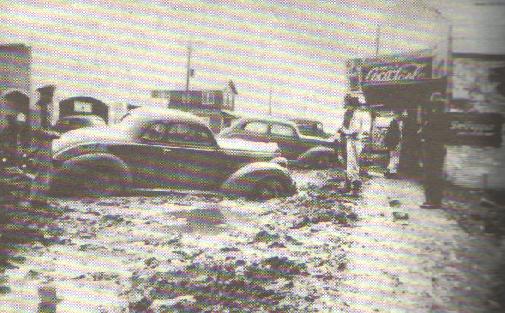
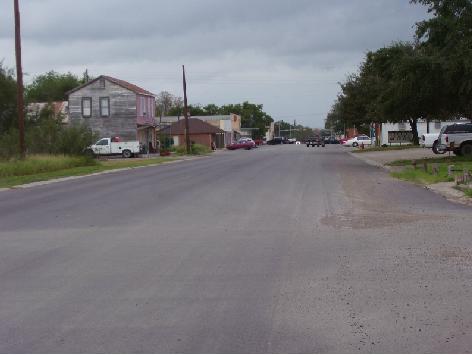
So the story goes like this, Susi and I are on our way to begin all the research on the small town of Freer. On the way to Freer Susi and i are talking and trying to keep each other awake, but we failed to check one thing before we left......GAS! We forgot to check for GAS! Suddenly the car starts to slow down and Susi looked bewildered as to why this was happening. Susi looks down at the gas meter and notices we are empty. With our hopes that we were close to Freer and that maybe there was enough gas to get us there the car just stops. We were stranded on the road in the middle of no where. We both get out of the car and hope that someone would see us. God answered our prayers, two trucks pulled over without any hesitation and asked us if we were ok. We told them we were on our way to Freer but that we had run out of Gas. Suprisingly they were residents of Freer! They chuckled and filled our tank just enough to get us to Freer. These two men with their kindness and friendliness truly showed us that our journey in researching Freer was our best choice.